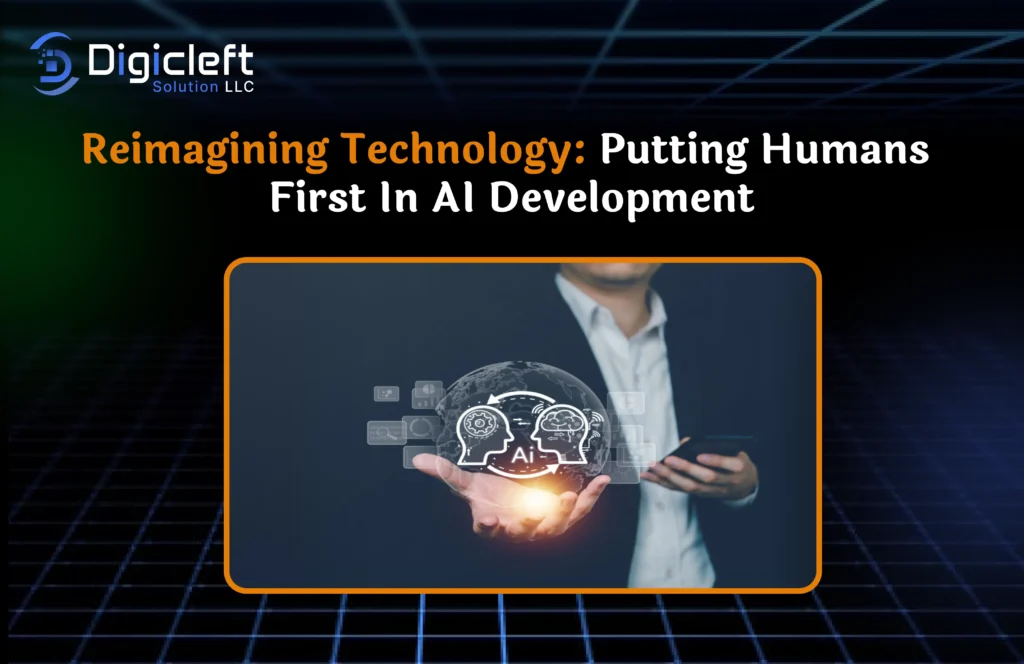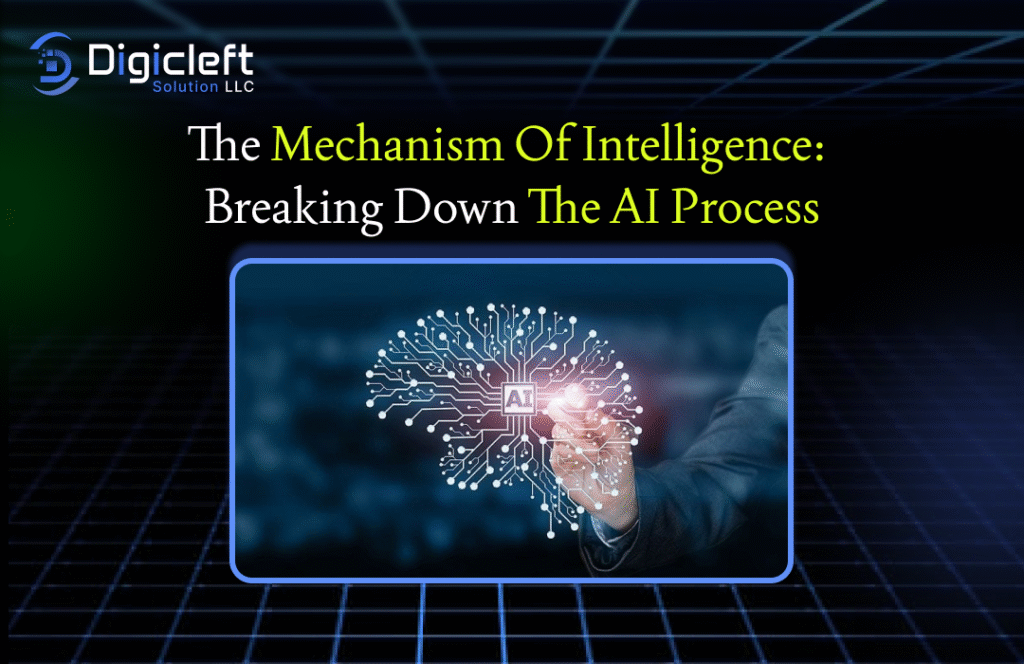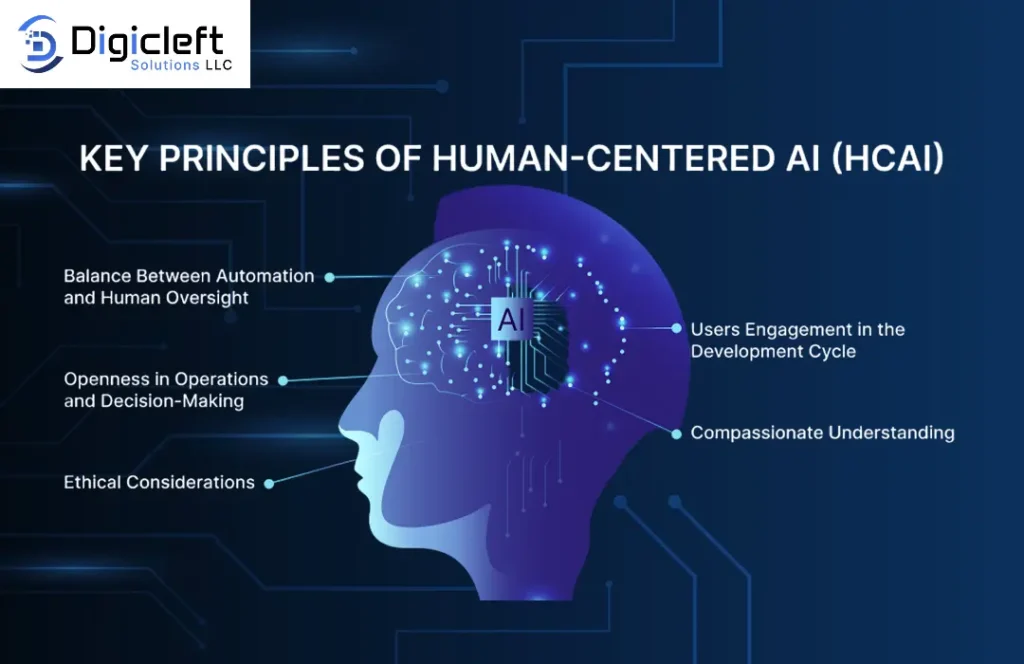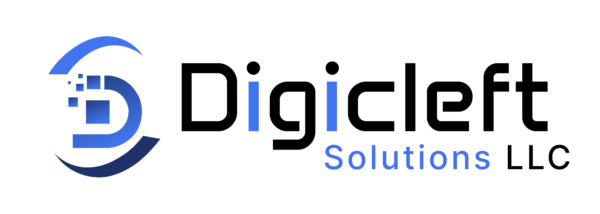
Artificial Intelligence (AI) has grown faster than any technology in modern history shaping industries, transforming workplaces, and even influencing how we think. Yet, amidst all this progress, one critical question emerges: Are we building technology for humans, or are humans adapting for technology?
Companies like Digicleft Solution are proving that innovation doesn’t have to leave humanity behind. Instead, it can elevate people, creating a symbiotic relationship between machines and humankind.
The Shift from Machine-Centric to Human-Centric AI
In the early days, AI systems focused on performance speed, precision, and automation. But something was missing: the human touch. This focus on technical perfection often overlooked emotional intelligence, ethics, and real-world context.
Now, a new paradigm is emerging one that views humans not as data points but as partners. This shift from machine-centric to human-centric AI ensures that technology aligns with human needs, not the other way around.
What Does Human-Centered AI Really Mean?
Human-centered AI (HCAI) means designing systems that empower people, respect human values, and enhance life quality. It’s about combining technical brilliance with emotional awareness.
Imagine AI as a co-pilot rather than a replacement aiding humans while leaving final control in their hands. That’s the essence of reimagined technology.
The Ethical Foundation of AI
AI ethics isn’t just a checkbox; it’s the compass guiding innovation. Human-first AI prioritizes fairness, accountability, and transparency. Data privacy must be treated as a right, not a privilege. Algorithms must be explainable, not mysterious black boxes.
As AI evolves, ethical responsibility becomes a shared mission for developers, users, and regulators alike.
The Role of Empathy in AI Development
Empathy might sound out of place in tech conversations, but it’s exactly what AI needs. A compassionate algorithm understands context, embraces diversity, and avoids bias.
When empathy is integrated into design like Digicleft Solution’s human-first initiatives technology becomes a bridge between emotion and logic. It connects with people on a deeper level, making experiences more meaningful.

Real-World Impact of Human-Centered AI
Healthcare — AI with a Heart
AI isn’t just diagnosing diseases faster it’s learning to care. Tools that interpret patient emotions or predict stress levels show how data can meet compassion.
Education — Personalized and Accessible Learning
AI tutors now adapt to each student’s learning style, making education more inclusive, personalized, and engaging for all backgrounds.
Workplace — Balancing Automation and Creativity
Automation can handle repetitive tasks while humans focus on creativity and strategy. Human-centered AI creates harmony, not competition, between man and machine.
Digicleft Solution — A Case of Responsible Innovation
Digicleft Solution exemplifies what responsible AI looks like. Their systems aren’t just smart; they’re sensitive built to enhance productivity while prioritizing human well-being.
They focus on sustainable innovation, user empowerment, and ethical integration, proving that the best technology listens before it acts.
Building Trust Between Humans and Machines
Trust isn’t optional; it’s essential. Without it, even the smartest AI will fail. Transparent systems that explain their decisions in human language foster confidence and acceptance. When users understand why AI acts, they’re more likely to rely on it.

The Future of Work in the Age of Human-Centric AI
The workplace isn’t disappearing it’s evolving. Human-centered AI encourages collaboration, where technology becomes a supportive coworker.
As automation takes over repetitive duties, humans can focus on creativity, empathy, and strategic thinking. Companies like Digicleft Solution are helping businesses transition by building systems that augment rather than replace human capabilities.
Designing AI That Understands Humans
The next frontier of AI lies in emotional intelligence. From virtual assistants that recognize frustration to chatbots that show compassion, understanding emotion is key. This evolution will make AI feel less like code and more like a companion reliable, intuitive, and human-like.
The Challenge of Bias and How to Fix It
Bias in AI can amplify inequality if left unchecked. Human-centered AI demands transparency in data collection and continuous auditing of algorithms. Building diverse teams and datasets ensures fairness.
In short, the best way to eliminate bias is to keep humans diverse, empathetic, and thoughtful ones in the loop.
Regulation and Governance in Human-Centered AI
Ethical frameworks aren’t barriers to progress; they’re blueprints for sustainable innovation. Governments worldwide are developing AI policies that prioritize responsibility, user safety, and fairness.
Collaborations between private enterprises and policymakers, like Digicleft Solution’s ethical compliance model, are essential for building global standards.
The Road Ahead — Shaping a Human-Led Tech Future
The future of AI isn’t about smarter machines it’s about better humans. When we design with empathy, ethics, and inclusivity, we create technology that mirrors our highest values.
Every click, every line of code, and every algorithm should move us closer to a more compassionate digital age.
Conclusion
To truly revolutionize technology, we must return to its roots humanity. Putting humans first in AI development doesn’t slow innovation; it gives it purpose. Companies like Digicleft Solution are leading the charge, proving that technology can evolve with us, not against us.
The future belongs to systems that care as much as they compute and to people who believe empathy is the ultimate form of intelligence.
FAQs
- 1. What does “Human-Centered AI” mean?
It refers to AI systems designed to empower humans, respect values, and improve life quality while maintaining transparency and ethics. - 2. How does empathy play a role in AI development?
Empathy ensures AI understands context and emotion, leading to fairer, more inclusive, and user-friendly technology. - 3. Why is trust important in AI?
Trust allows users to confidently interact with AI, knowing its actions are transparent, safe, and understandable. - 4. What challenges do human-centered AI developers face?
Major challenges include bias, data privacy, and balancing automation with human judgment. - 5. How is Digicleft Solution contributing to human-first AI?
They prioritize ethical, sustainable, and user-focused innovations that enhance human lives rather than replace human effort.


